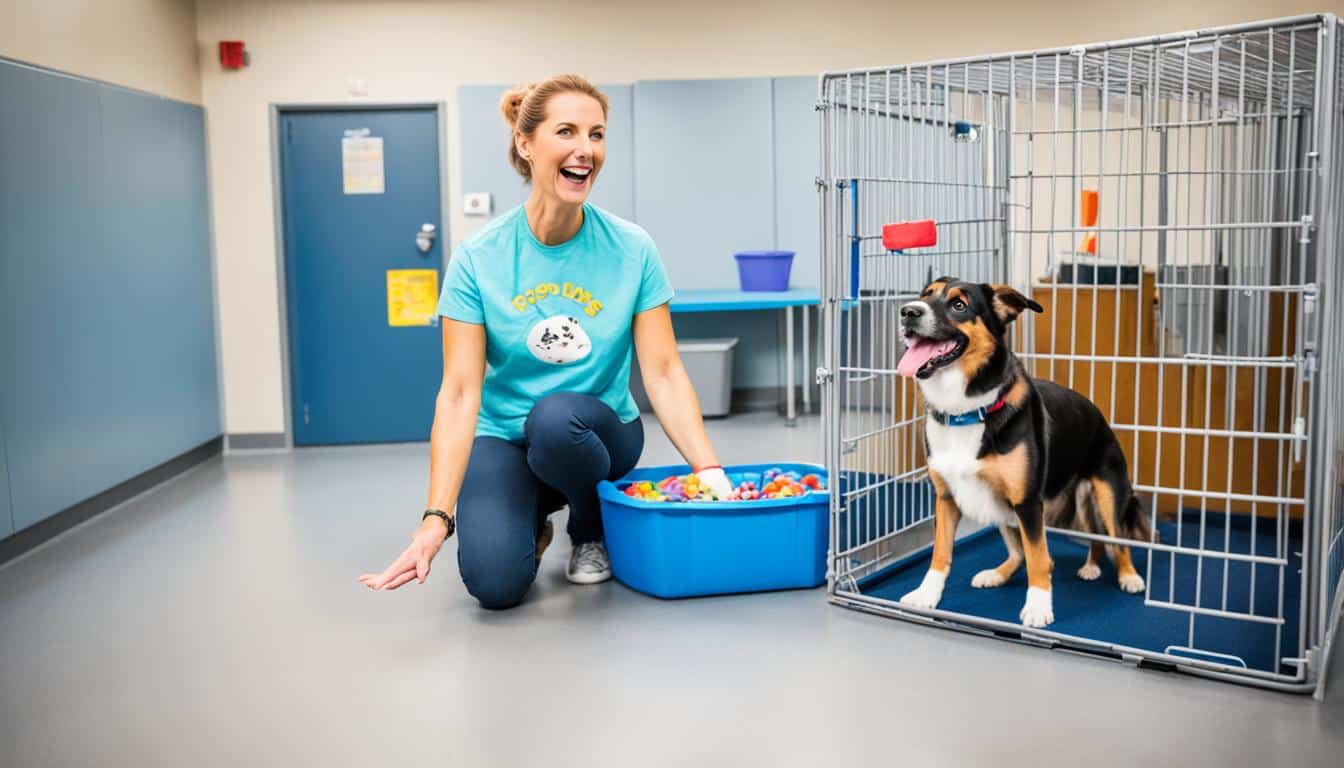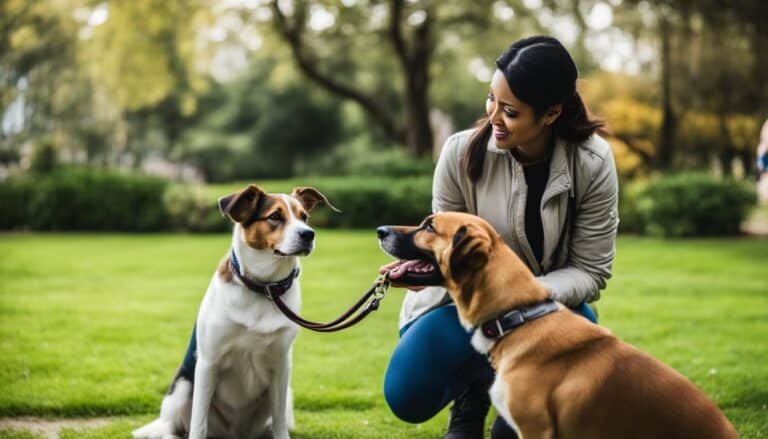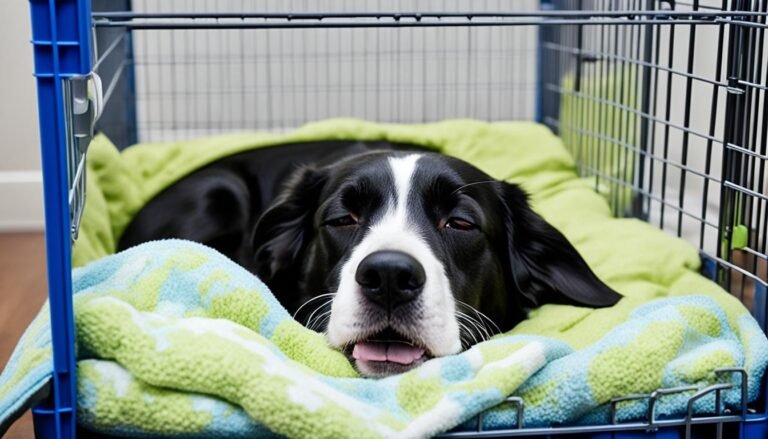How to Kennel Train a Dog
Welcome to our guide on how to kennel train a dog! Kennel training, also known as crate training, is an essential step in ensuring your furry friend has a safe and comfortable space of their own. By using crates correctly, you can provide a secure environment for your dog while teaching them valuable skills.
In this article, we will provide you with valuable kennel training tips and best practices for crate training. Whether you’re a new dog owner or looking to refine your training techniques, we’ve got you covered.
To make the kennel training process a positive and stress-free experience for both you and your dog, it’s important to follow a step-by-step approach. Remember, patience and positive reinforcement are key!
Stay tuned as we explore the importance of proper crate use, selecting the right crate for your dog, the crate training process, tips for successful training, managing time in the crate, incorporating crate games, and the importance of patience and persistence in crate training.
Whether you’re crate training a new puppy or helping an older dog adjust to their crate, our comprehensive guide will provide you with valuable insights and strategies for success. Let’s get started on this exciting journey of kennel training!
The Importance of Proper Crate Use
Using crates effectively is a valuable tool in crate training a puppy and ensuring their well-being. When done correctly, crate training can help manage a dog’s behavior and create a sense of security for them. However, it’s important to understand that crates should never be used for punishment. Instead, they should be a positive space for your dog, providing them with a safe and comfortable area to relax and retreat to.
When it comes to crate training, there are effective methods you can follow to encourage your dog’s positive association with the crate. By introducing your puppy to the crate gradually, using positive reinforcement techniques, and creating a routine, you can make crate training a rewarding experience for both you and your dog.
Crate training is especially beneficial when it comes to house training your puppy. A well-designed crate can assist in potty training by teaching your dog to hold their bladder and bowels until they are let outside. Additionally, crates can prevent destructive behaviors that may occur when your puppy is left unsupervised.
Key Points for Effective Crate Training:
- Create a positive association with the crate by making it inviting and comfortable.
- Gradually introduce your puppy to the crate, starting with short periods and gradually increasing the time.
- Use treats and rewards to reinforce positive behavior and create a positive learning experience.
- Establish a consistent routine for crate training sessions.
- Never use the crate for punishment or as a means to confine your dog for extended periods.
By following these effective crate training methods, you can help your puppy feel secure in their crate and develop a positive association with it. With patience, consistency, and a compassionate approach, crate training can be a successful endeavor for both you and your furry friend.
Selecting the Right Crate for Your Dog
When it comes to kennel training your dog, selecting the right crate is crucial for their comfort and safety. Consider the following factors to choose the perfect kennel for your furry friend:
Size and Age
The crate should be spacious enough for your dog to stand up, turn around, and stretch comfortably. Measure your dog’s height and length to ensure the crate is the right size. Keep in mind that puppies will grow, so consider getting a crate suitable for their adult size or opt for an adjustable crate.
Kennel Types
There are various types of dog crates available, each with its advantages:
- Plastic Dog Crates: These durable crates provide a cozy, den-like environment, offering a sense of security for your dog. They are ideal for traveling due to their sturdy construction and solid walls.
- Wire Dog Crates: These crates offer excellent ventilation and visibility, allowing your dog to see what’s happening around them. They are collapsible and easy to clean, making them a convenient option.
- Soft Dog Crates: These lightweight and portable crates are designed for dogs who are comfortable in a more relaxed, fabric-like space. Soft crates are perfect for short trips or well-behaved dogs who need a cozy spot at home.
Consider your dog’s needs, preferences, and any specific requirements (such as airline travel) when selecting the right type of crate.
Remember, providing a comfortable and appropriately-sized crate is essential for your dog’s well-being during crate training.
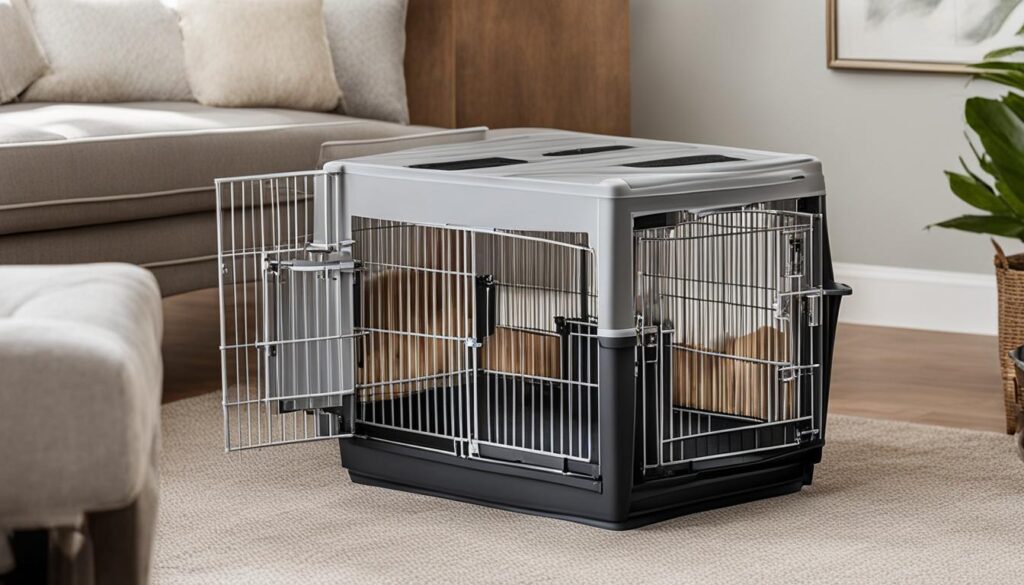
The Crate Training Process
Crate training is a gradual process that requires time, patience, and consistency. By following a step-by-step approach, you can help your dog build a positive association with the crate and make it their safe and comfortable space.
To begin, introduce your dog to the crate in a positive way. Place enticing treats or their favorite toys inside the crate to encourage them to explore and enter willingly. Use a command, such as “crate” or “kennel,” to associate the action with the crate.
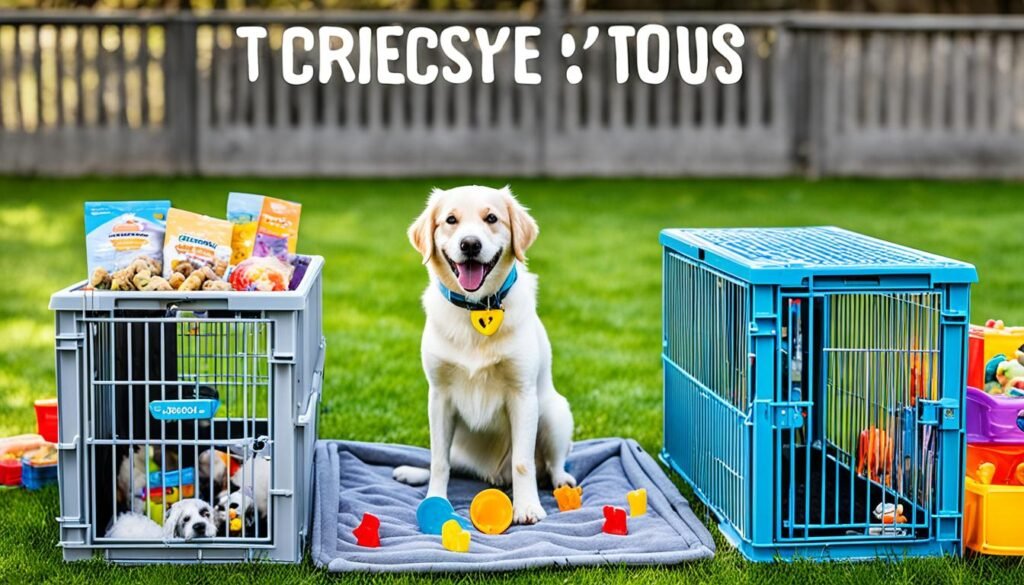
Once your dog shows interest in the crate, gradually increase the time they spend inside it. Start with short periods, such as a few minutes, and gradually extend the duration over several days. Be patient and allow your dog to adjust to the crate at their own pace.
During crate training sessions, use positive reinforcement techniques. Reward your dog with treats, praise, or petting when they enter the crate or exhibit calm behavior inside. This will help them associate the crate with positive experiences and rewards.
Create a consistent schedule for crate training sessions. Aim to have regular, structured times when your dog spends time in the crate. This will help establish routine and predictability, making the crate training process more effective.
In addition to scheduled crate time, offer opportunities for your dog to voluntarily enter the crate throughout the day. Leave the crate door open and encourage them to explore it when they feel comfortable. This helps strengthen their positive association with the crate.
Remember, crate training should be a positive experience for your dog. Never use the crate as a form of punishment or confinement for extended periods. It should be a place where they feel secure, relaxed, and comfortable.
By following these puppy crate training techniques and using a consistent kennel training schedule, you can help your dog become accustomed to the crate and develop positive behavior and habits.
Tips for Successful Crate Training
To ensure successful crate training for your dog, it’s essential to establish a positive mindset and create a comfortable environment in the crate. Here are some tips to help you achieve this:
-
Establish a positive mindset: Associate the crate with relaxation and rest by introducing your dog to the crate in a calm and gentle manner. Encourage them to explore the crate on their own terms, and reward them with treats or praise when they enter the crate willingly.
-
Reward good behavior: Use positive reinforcement techniques to reward your dog for exhibiting good behavior in the crate. This can include treats, praise, or interactive toys. By associating positive experiences with the crate, your dog will be more likely to view it as a safe and enjoyable space.
-
Keep the dog comfortable: Ensure that the crate is a comfortable and inviting space for your dog. Choose a suitable bedding option that provides cushioning and warmth. Take into consideration your dog’s preferences when it comes to the crate’s setup, such as adding their favorite toy or blanket.
Remember, crate training is a gradual process, and it’s important to be patient and consistent. By establishing a positive mindset, rewarding good behavior, and creating a comfortable environment, you can help your dog feel more secure and content in their crate.
Managing Time in the Crate
When it comes to crate training, finding the right balance is key. It’s important to consider your dog’s need for exercise, interaction, and bathroom breaks while managing their crate time. Puppies under six months old are still developing control over their bladder and bowels, so they should not stay in the crate for more than three to four hours at a time. Gradually increase the duration of crate time as your dog gets older and becomes housetrained.
Allowing your dog sufficient time outside the crate for exercise and play is crucial for their overall well-being. Regular walks and interactive play sessions help release pent-up energy and prevent boredom. Remember, the crate is not a substitute for daily exercise but rather a tool to aid in house training and provide a safe space for your dog.
Interaction and socialization are equally important. Dogs are social animals and thrive on human companionship. Be sure to spend quality time with your dog outside of the crate, engaging in activities that strengthen your bond. This can include playing, training sessions, or simply relaxing together.
In addition to exercise and interaction, bathroom breaks are a necessity. Dogs should have the opportunity to relieve themselves regularly to maintain their hygiene. Take your dog outside for short bathroom breaks before and after crate time, as well as during longer intervals. This ensures that your dog does not become uncomfortable or anxious in the crate due to a full bladder.
By managing your dog’s crate time and balancing it with exercise, interaction, and bathroom breaks, you create a harmonious routine that promotes their well-being and supports successful crate training.
Image:
Incorporating Crate Games
To make crate training a positive experience for your dog, it’s essential to incorporate crate games into your training routine. These games help reinforce a positive association with the crate, making it a fun and enjoyable place for your furry friend.
One fun game you can play is using toys or treats to encourage your dog to go in and out of the crate willingly. Start by placing a favorite toy or a tasty treat near the crate to attract your dog’s attention. Encourage them to approach the crate and explore by using verbal cues like “crate” or “go to your den.” Once they go near or inside the crate, reward them with praise and a treat. Repeat this game several times, gradually increasing the difficulty by placing the toy or treat farther inside the crate. This helps your dog become comfortable with entering and exiting the crate on their own.
Another game you can try is incorporating the crate into playtime activities. For example, play a game of fetch where the crate becomes the designated “home base” for your dog to return to after fetching the toy. This not only trains your dog to enter the crate willingly but also adds an extra element of fun to the game.
To further enhance your dog’s positive association with the crate, you can also hide treats inside the crate for them to find. Start by placing a few treats inside the crate while your dog watches. Once they see the treats, encourage them to enter the crate and retrieve the treats. As they become more comfortable, gradually increase the level of difficulty by hiding treats in different spots or using toys that require some interaction to release the treats. This game engages your dog’s natural foraging instincts while creating a positive connection with the crate.
Remember, the key to successful crate training is to make the crate a positive place for your dog. By incorporating these crate games into your training routine, you are not only making the training process enjoyable but also strengthening the bond between you and your furry companion.
- Encourage your dog to go in and out of the crate willingly using toys or treats
- Incorporate the crate into playtime activities, such as fetch
- Hide treats inside the crate for your dog to find, engaging their foraging instincts
- Make the crate a fun and enjoyable space for your dog
Patience and Persistence in Crate Training
Crate training your dog requires time, patience, and consistent effort. It’s important to understand that every dog is unique, and their progress may not always follow a linear timeline. Be prepared for challenges along the way, and remember that perseverance is key to success.
During the crate training process, setbacks may occur. Your dog might resist going inside the crate or exhibit signs of anxiety. Stay calm and avoid becoming frustrated. Stick to the training methodology you’ve established and provide reassurance for your pet.
Consistency is crucial in crate training. Follow a set routine and reward your dog’s progress with praise, treats, or toys. This positive reinforcement helps create a positive association with the crate and encourages your dog to view it as a safe and comfortable space.
Over time, your dog will gradually become more comfortable and well-adjusted to the crate. Remember, crate training is a journey, and each dog has their own crate training timeline. With patience and persistence, you will see progress and eventually achieve the desired outcome of a well-behaved and contented dog.
